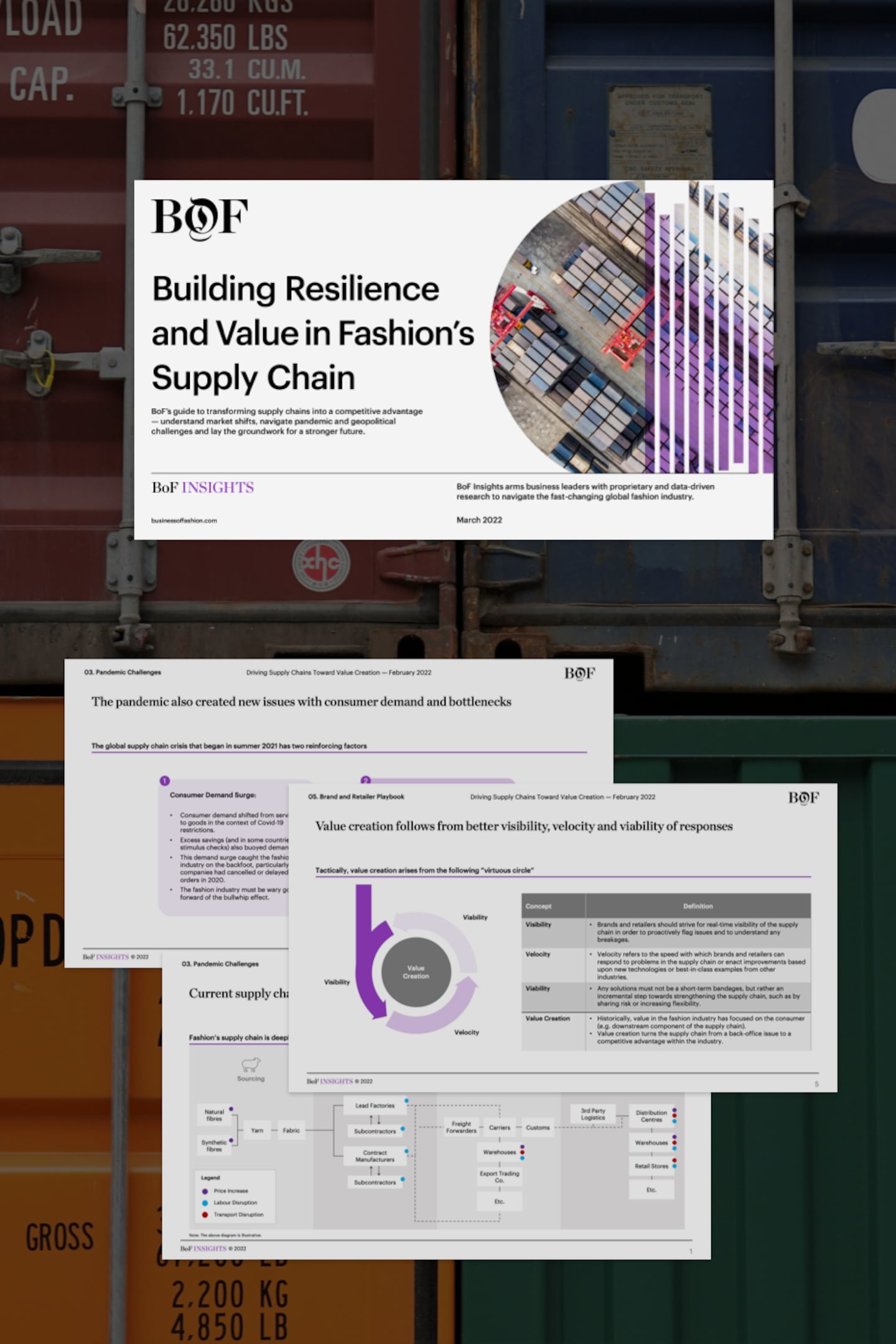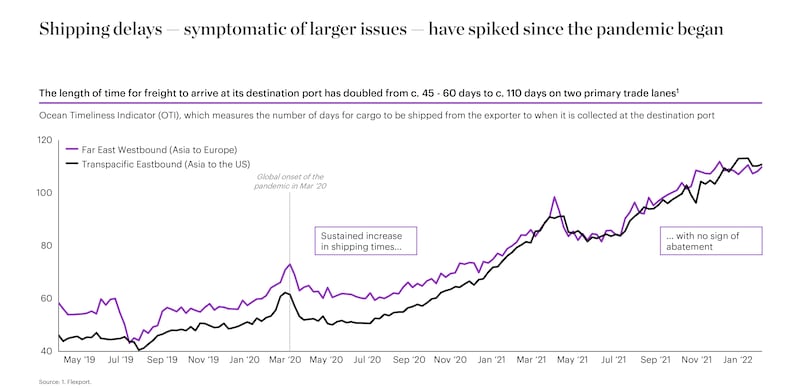
The Business of Fashion
Agenda-setting intelligence, analysis and advice for the global fashion community.

Agenda-setting intelligence, analysis and advice for the global fashion community.

The Covid-19 pandemic precipitated an enormous human and economic catastrophe, ushering in a period of disruption and volatility that shows no signs of abating. In just the last week, Russia’s invasion of Ukraine stunned and outraged the world. The pandemic and the recent conflict in Europe are the latest indications that an era of relative stability in the world order — and supply chains — is coming to an end.
For the fashion industry, the pandemic magnified fragilities and vulnerabilities in its supply chain given the industry’s labour intensity and the sprawl of its global operations. It exposed existing issues, including difficulties in safeguarding human rights, navigating geopolitical tensions and improving environmental standards. It also created new challenges, such as an unforeseen surge in consumer demand coupled with operational bottlenecks in key hubs and transit points.

Indeed, even before Russia’s invasion of Ukraine, senior fashion executives ranked supply and value chain pressures as the top theme that will shape the fashion industry in 2022.
Building Resiliency and Value in Fashion’s Supply Chain is the third in-depth report to be published by BoF Insights, a new data and analysis think tank from The Business of Fashion that arms business leaders with proprietary and data-driven research to navigate the fast-changing fashion industry.
ADVERTISEMENT
In this report, BoF Insights identifies five secular shifts that have been affecting fashion’s supply chains:
The report also surveys senior fashion executives to understand their leading concerns and priorities, revealing that:
The report concludes with a brand and retailer playbook that is designed to help companies move away from attempting to solve the supply chain “trilemma” — balancing speed, reliability and cost when only two factors can be achieved at any one time. Instead, BoF Insights outlines a discrete set of value-creating initiatives that focus on improving visibility across, velocity in and the ultimate viability of fashion’s supply chains.
30 interviews with founders, senior executives and academicians drawn from:
An exclusive BoF Decision-Maker Survey fielded by BoF across its global community of fashion professionals, representing a cross-section of senior decision-makers across a leading set of fashion brands and retailers.
Companies covered and/or interviewed in the report include American Eagle Outfitters, ASKET, ASOS, DXM Inc., Flexport, Katla, Kavida.ai, Li & Fung, Linc, MANGO, Neiman Marcus, Nordstrom, Ohi, On, PANGAIA, Panjiva, Quiet Logistics, Reformation, Saint Art, Shahi Exports, SHEIN, SILQ, SXD, Syrup Tech, TextileGenesis, TrusTrace and Zalando.
BoF Insights is The Business of Fashion’s data and advisory team, partnering with leading fashion and beauty clients to help them grow their brands and businesses. Get in touch at insights@businessoffashion.com to understand how BoF Insights support your company’s growth for the long term.
Designer brands including Gucci and Anya Hindmarch have been left millions of pounds out of pocket and some customers will not get refunds after the online fashion site collapsed owing more than £210m last month.
Antitrust enforcers said Tapestry’s acquisition of Capri would raise prices on handbags and accessories in the affordable luxury sector, harming consumers.
As a push to maximise sales of its popular Samba model starts to weigh on its desirability, the German sportswear giant is betting on other retro sneaker styles to tap surging demand for the 1980s ‘Terrace’ look. But fashion cycles come and go, cautions Andrea Felsted.
The rental platform saw its stock soar last week after predicting it would hit a key profitability metric this year. A new marketing push and more robust inventory are the key to unlocking elusive growth, CEO Jenn Hyman tells BoF.